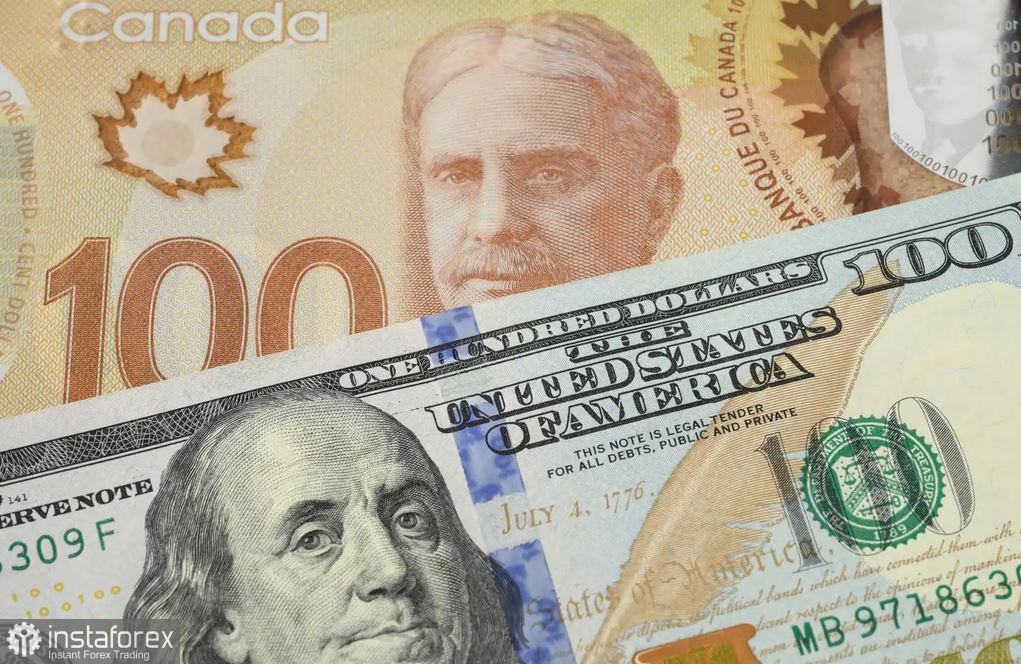The downward dynamics do not seem impulsive – the pair is gradually falling, with quite impressive upward pullbacks. However, if we look at the USD/CAD weekly chart, we will see that the pair has decreased by almost 600 pips over the past few months. At the end of October, the bulls approached the 1.3900 level (setting a new high for the year at 1.3898), while this week, the bears updated a 5-month low at 1.3310. Such dynamics are primarily due to the US dollar's weakness. However, the loonie is also not falling behind, strengthening the bearish trend due to relatively strong inflation data in Canada.

Reminder: On Monday, the head of the Bank of Canada, Tiff Macklem, said that the central bank may start lowering interest rates in 2024 if the core inflation decreases. Literally the next day, on December 19, Canada released the key inflation report for November, all components of which were in the "green zone."
It turned out that the Consumer Price Index (CPI) remained at 3.1% on an annual basis last month, against the forecasted decline to 2.9%. On a monthly basis, the indicator increased by 0.1%, while most experts expected a 0.1% decline. The core CPI, excluding volatile energy and food prices, were also in the "green", rising to 2.8% on an annual basis (the indicator increased again after a two-month decline).
Other indicators of core inflation used by the Bank of Canada—the median CPI and the trimmed CPI—remained at the levels of the previous months (3.4% and 3.5%, respectively), while most experts predicted a downtrend (3.2% and 3.4%, respectively).
According to the head of the Canadian central bank, one of the main reasons for the sustained increase in the overall inflation level is the persistent rise in housing prices. In turn, Statistics Canada clarified that in November, the increase in the cost of travel packages compensated for the slowdown in food price growth and the reduction in mobile communication tariffs and fuel.
Take note that ahead of this report, the probability of a rate cut at the January meeting was around 30%. As of today, this probability is at 12%. Most experts said that the first round of monetary easing is likely to occur no earlier than April 2024, provided that inflation begins to slow down actively from December.
Take note that the Federal Reserve's future course of actions are more dovish. The first rate cut is expected as early as March 2024. According to the CME FedWatch Tool, the chances of a 25-basis-point interest rate cut at the March meeting are currently at 70%. Moreover, the market is confident that at the next meeting in May, the rate will be cut by 50 basis points from the current level.
As we can see, there is currently a certain discordance, at least in terms of market expectations. Inflation in Canada shows some resilience (thereby dampening traders' dovish sentiments), while in the United States, dovish sentiments are only increasing.
The oil market also provides additional support for the loonie. Crude oil prices continue to rise amid increasing risks of further restrictions on the transportation of resources through the Red Sea due to attacks by Yemeni Houthi rebels on tankers and cargo ships. The price of February Brent crude oil futures on the ICE Futures exchange in London reached $80.1 per barrel on Wednesday. WTI crude oil futures for February rose to $74.85 per barrel. Over the past two sessions, the price of Brent crude oil has risen by more than 3%. This is happening against the backdrop of statements by Yemeni rebels who promised to attack all ships in the Red Sea heading towards Israel, regardless of ownership. Meanwhile, the United States and the coalition formed by Washington are still considering whether to attack Houthi formations due to the threat to maritime routes.
Thus, the established fundamental background contributes to further declines in USD/CAD. On Wednesday, the pair tested the support level of 1.3310 (the lower line of the Bollinger Bands on the daily chart, simultaneously the lower band of the Kumo cloud and the lower line of the Bollinger Bands on the weekly chart), but eventually failed. It is advisable to consider selling after the bears finally break this target (for instance, if the core PCE index ends up in the "red"). The main target of the downward movement is the level of 1.3180, which is the Kijun-sen line on the MN timeframe.
 English
English 
 Русский
Русский Bahasa Indonesia
Bahasa Indonesia Bahasa Malay
Bahasa Malay ไทย
ไทย Español
Español Deutsch
Deutsch Български
Български Français
Français Tiếng Việt
Tiếng Việt 中文
中文 বাংলা
বাংলা हिन्दी
हिन्दी Čeština
Čeština Українська
Українська Română
Română

